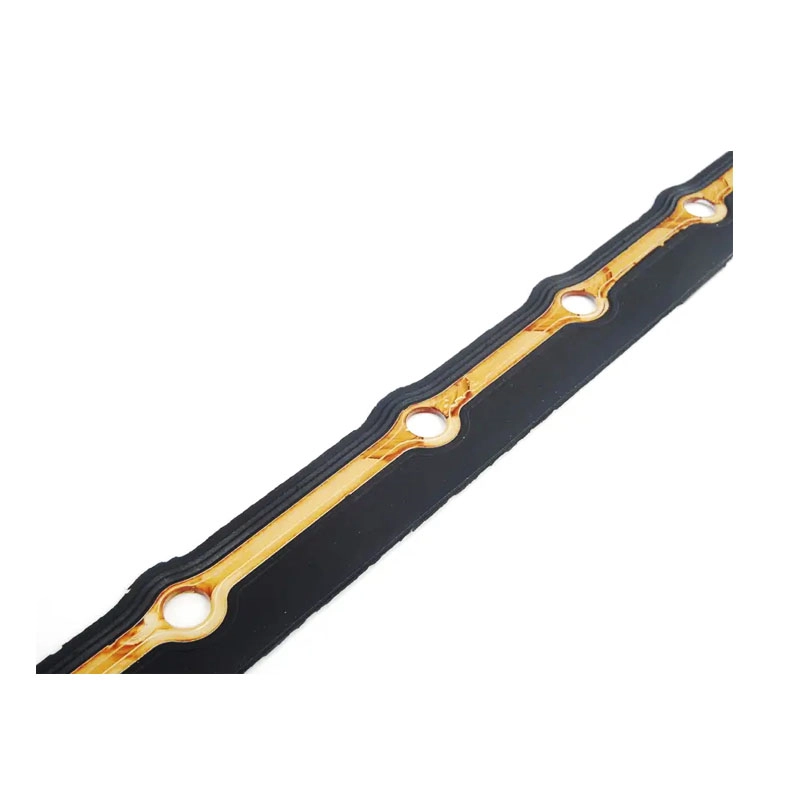oil seal standard
Understanding Oil Seal Standards A Comprehensive Overview
Oil seals, also known as radial shaft seals, are vital components in various machinery and automotive applications. They play a crucial role in preventing the leakage of lubricants while also protecting the internal components from contaminants, moisture, and dust. The significance of oil seals cannot be overstated, and adhering to recognized standards is essential for ensuring their quality and performance.
What are Oil Seal Standards?
Oil seal standards refer to the specifications and guidelines established by organizations and industry bodies for the design, manufacturing, and testing of oil seals. These standards serve several purposes they help manufacturers produce reliable seals, provide buyers with assurance of quality, and facilitate compatibility across different applications and machinery. Prominent standardization organizations, such as the International Organization for Standardization (ISO), American National Standards Institute (ANSI), and others, have developed protocols and benchmarks for oil seals.
Key Characteristics of Oil Seals
Understanding the properties of oil seals is essential when discussing standards. Oil seals are primarily made using elastomers such as nitrile rubber, fluorocarbon rubber, or silicone rubber, which need to withstand various conditions, including temperature fluctuations, pressure, and chemical exposure. The critical characteristics of oil seals include
1. Material Selection The material must be compatible with the lubricating fluids and environmental conditions of the application. Different materials are chosen for their unique properties, such as temperature resistance or chemical stability.
2. Dimensions Standardized dimensions are critical for fitting oil seals in various machinery. These dimensions define the outer diameter, inner diameter, and width of the oil seal.
3. Design Features Oil seals often come with specific design features like lip configurations, which play a crucial role in sealing effectiveness. Variations can include single or double lip designs, and even specialized forms that offer enhanced performance.
oil seal standard

4. Performance Criteria Standards typically outline the performance criteria that an oil seal must meet, such as pressure resistance, temperature limits, and durability against wear and tear. Testing methods may include dynamic and static sealing tests, among others.
Importance of Adhering to Standards
Adhering to oil seal standards is vital for several reasons
1. Quality Assurance Standards ensure that the product meets specific quality criteria, thus minimizing failures and ensuring that the seal performs optimally throughout its intended lifespan.
2. Interchangeability When oil seals adhere to established standards, it promotes interchangeability among different manufacturers. This reduces downtime and costs, as operators can easily replace seals without worrying about compatibility.
3. Regulatory Compliance In many industries, compliance with safety and performance standards is mandatory. Meeting these standards helps manufacturers comply with regulations, avoiding legal liabilities and enhancing product credibility.
4. Market Competitiveness Companies that adhere to recognized standards often enjoy a competitive advantage. They can market their products with the assurance of quality, providing customers with confidence in their performance.
Conclusion
Oil seal standards are integral to the manufacturing and application of these critical components in various industries. By defining specifications and performance criteria, standards help ensure that oil seals function effectively, providing necessary protection for machinery and enhancing its operational life. As technology continues to evolve, staying updated with the latest standards and best practices remains essential for manufacturers and users alike, ensuring reliability in an ever-competitive marketplace. Adherence to these standards not only safeguards the performance of machinery but also fosters trust and ensures safety across applications.
-
Understanding Polaris Front Differentials: Key Components for Off-Road Performance
News Jun.20,2025
-
Understanding Crankshaft Seals and Gaskets: Essential Components for Engine Longevity
News Jun.20,2025
-
Understanding Crankshaft Oil Seals: Vital Protection for Engine Performance
News Jun.20,2025
-
The Vital Role of Front and Rear Crankshaft Seals in Engine Protection
News Jun.20,2025
-
Rear Crankshaft Seals: Protecting Your Engine from the Back End
News Jun.20,2025
-
Crank Oil Seals: What They Do, How They Fail, and What They Cost
News Jun.20,2025
-
Understanding Oil Crush Washers: A Small Component with a Big Role in Vehicle Maintenance
News Jun.19,2025
Products categories















